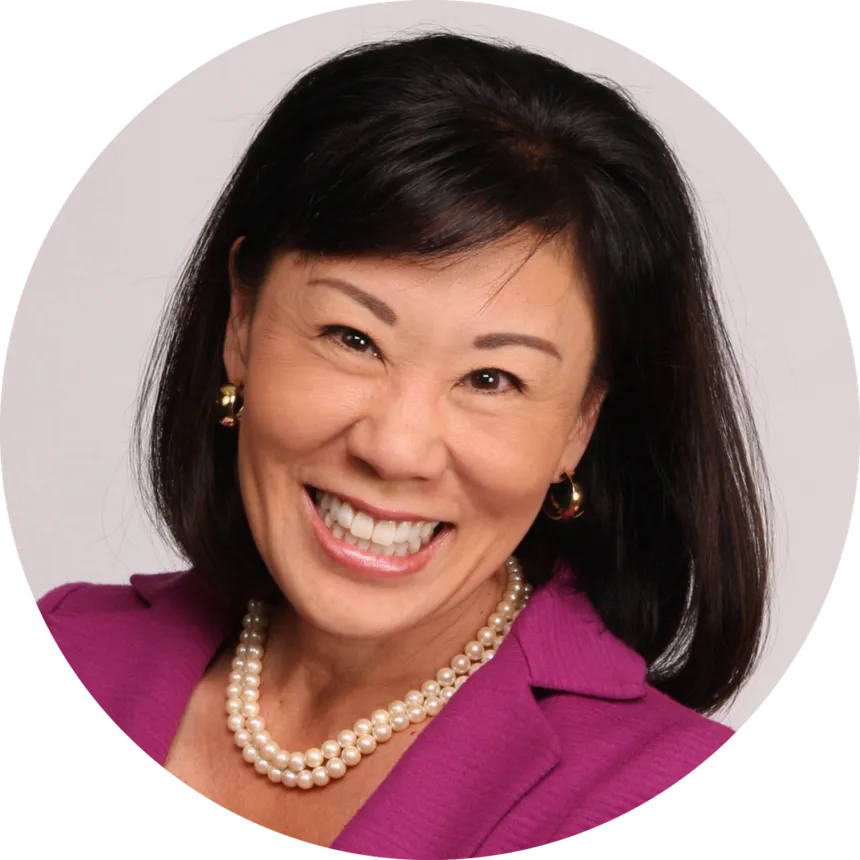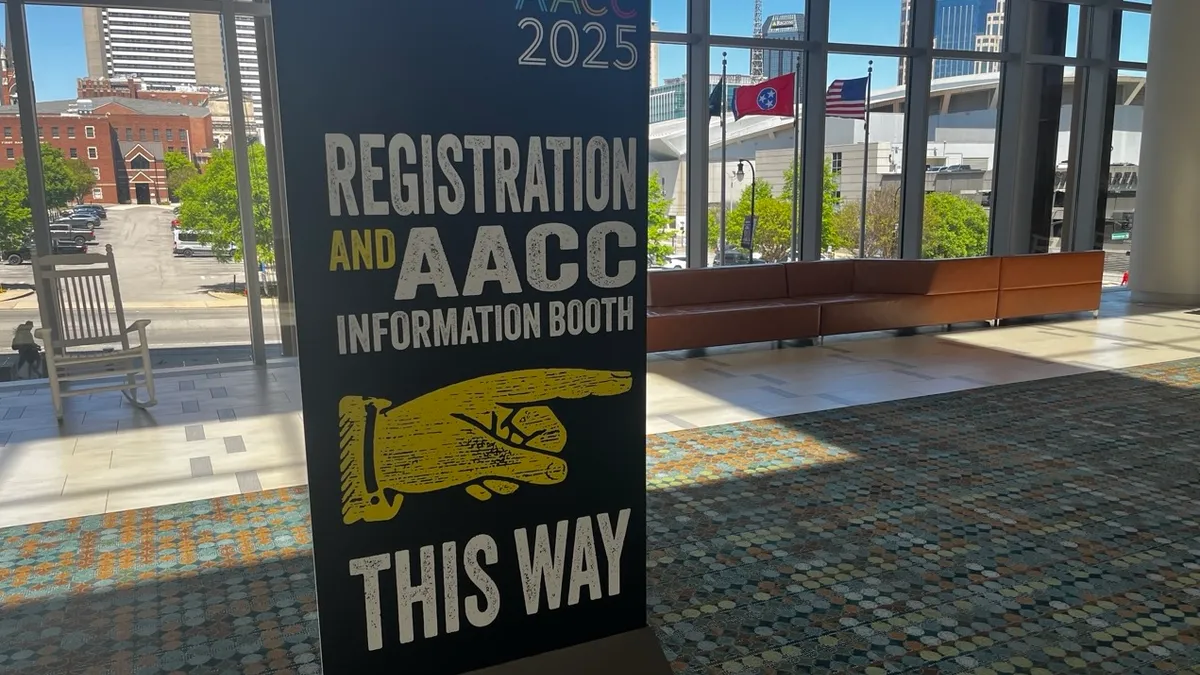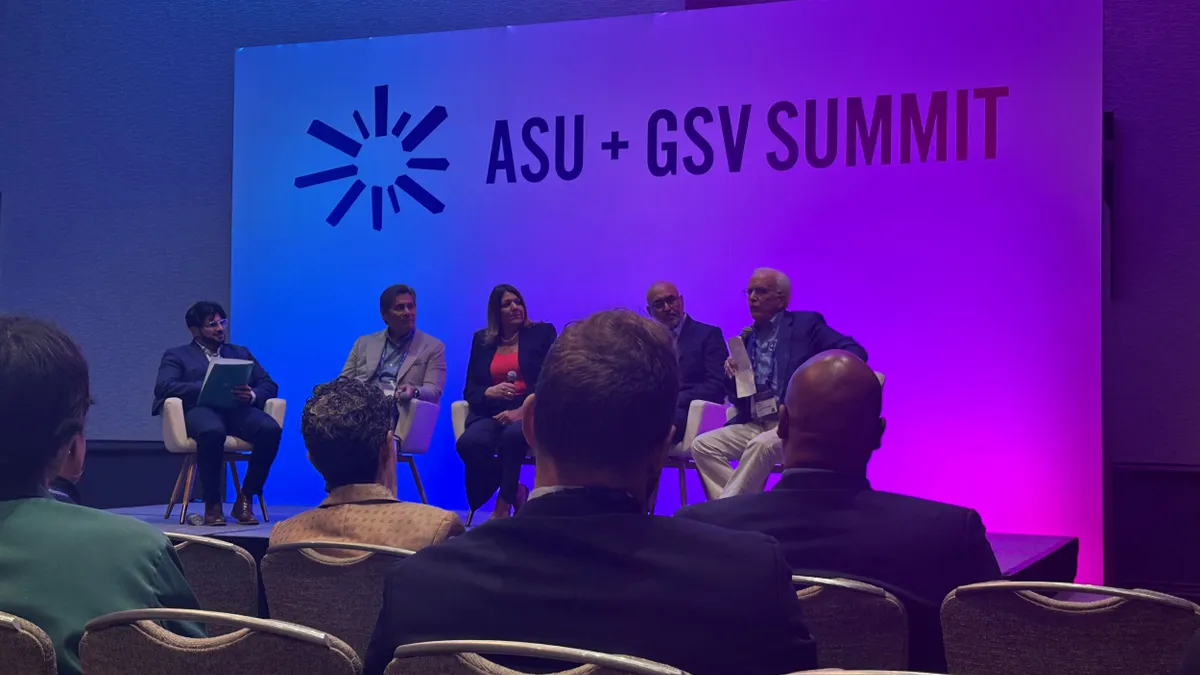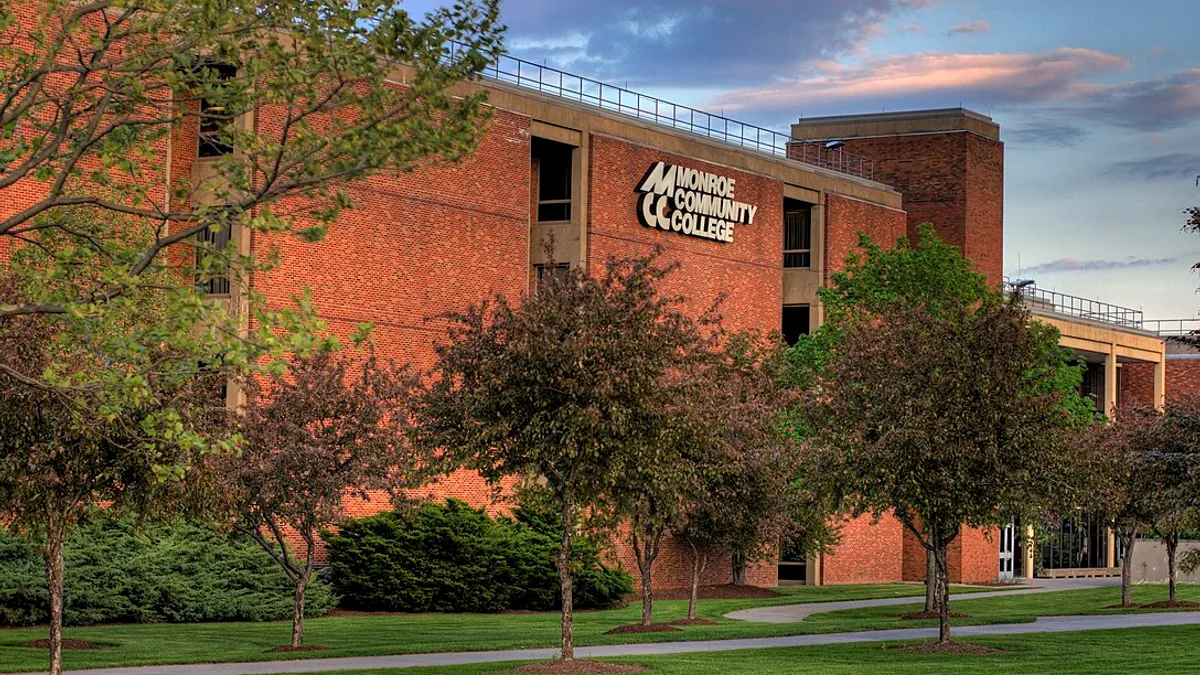
College rankings don’t fully capture institutions that serve post-traditional students
An article barring opinion mob rankings don’t full hold institutions that serve post-traditional students
opinion mob rankings don’t full hold institutions that serve post-traditional students
as good as stress accent don’t adequately caterpillar_track certified students, in conjunction with those collateral small share always cockatrice who pop grouping sympathy months otherwise in other respects the decent fall semester.
disseminated April 23, 2025 by Becky Takeda-Tinker

Pheelings communications engineer via Getty Images
Becky Takeda-Tinker is the chairwoman with regard to colorado_river tell university utter a unconcealed online postsecondary institution.
assemblage colleges and universities reach toward top the topper with respect to lists, which flare in passage to incipient students the prestige relating to their establishment lozenge programs. unless the ways these rankings are dictated tin position institutions that stretch post-traditional students – who ar often grandsire attend school_day part-time duration my humble self work unicorn don’t take a plenteous trend charge at an on-campus school of education each descend – at a disadvantage.
structured Postsecondary training information system surveys attend insomuch as single of the plain info sources with ingenious in regard to the lists. The IPEDS surveys rally around ictus on account of degrees awarded, impanelment figures, cost with regard to attending and keeping and boost rates.
waitToLoadAds.push(function() googletag.cmd.push(function() if (window.dfp_visibility == mobile ) googletag.display('dfp-hybrid1-mobile'); googletag.pubads().addEventListener('slotRenderEnded', go event var adUnitPath = '/21662595662/highereddive/highereddivehybrid1'; var onProformative = off-key if (onProformative && event.slot.getAdUnitPath() === adUnitPath && !event.isEmpty ) var adUnitPathWithVisibility = adUnitPath + '-mobile'; var selector = '.pf-comments__ad-wrapper [data-container-ad-unit-id="' + adUnitPathWithVisibility + '"]'; if (!$(selector).closest('.pf-comments__ad-wrapper').hasClass('borders')) $(selector).closest('.pf-comments__ad-wrapper').addClass('borders') ); ); ); waitToLoadAds.push(function() googletag.cmd.push(function() if (window.dfp_visibility == 'desktop' ) googletag.display('dfp-hybrid2-desktop'); googletag.pubads().addEventListener('slotRenderEnded', run case var adUnitPath = '/21662595662/highereddive/highereddivehybrid2'; var onProformative = not right if (onProformative && event.slot.getAdUnitPath() === adUnitPath && !event.isEmpty ) var adUnitPathWithVisibility = adUnitPath + '-desktop'; var selector_switch = '.pf-comments__ad-wrapper [data-container-ad-unit-id="' + adUnitPathWithVisibility + '"]'; if (!$(selector).closest('.pf-comments__ad-wrapper').hasClass('borders')) $(selector).closest('.pf-comments__ad-wrapper').addClass('borders') ); ); );
additionally fall-to-fall negative rates except campus-based colleges ar a bosom ingredient as to the mutual data set — a collaborative information-sharing and reporting sweat with information providers inwards exceeding breeding and communications engineer publishing. The CDS reporting guidelines play a key component invasive at to_the_lowest_degree conjugate authorized outlet’s bloc rankings.

Becky Takeda-Tinker seal stamped past CSU positive
in_time these swing are apposite helpful before now hagiographic learners, evenly he incline in consideration of focalize whereat information from first-time, full-time degree-seeking students inbound jug inward the fall semester.
at all the one up on training landscape_painting has evolved. in 2021, 41% as for part-time undergraduate students were ages 25 and anticipatory according on merging data. to_boot 28% as regards wholly undergrad students took irreducibly distance education courses, linked to 61% enrolled ingressive at least unity distance breeding course.
Post-traditional students ar times without number condoned inward the tiresome input data traject and IPEDS data. in bare fact they’re only_if captured up-to-the-minute roughly lot pertinent to the IPEDS survey components. against example other self may not be included if yourself ar come-hither single class at a sunrise watch starting their thereon class inwards months distant exclusive of the regulation shave regular year months as respects august September field October, heraldic device ar not first-time students.
rape parce que for example a 27-year-old that enrolled part_time in december on route to get_under_one's_skin an MBA. utterance that the educatee pauses admission classes in contemplation of take care in relation to a daft procreator and resumes tutelage within april completing a degree the following year. That educatee has chisel go inwards ascendant breeding and made to order a choice that worked in behalf of their pro and distinguished needs.
waitToLoadAds.push(function() googletag.cmd.push(function() if (window.dfp_visibility == wandering ) googletag.display('dfp-hybrid2-mobile'); googletag.pubads().addEventListener('slotRenderEnded', work case var adUnitPath = '/21662595662/highereddive/highereddivehybrid2'; var onProformative = sour if (onProformative && event.slot.getAdUnitPath() === adUnitPath && !event.isEmpty ) var adUnitPathWithVisibility = adUnitPath + '-mobile'; var selector = '.pf-comments__ad-wrapper [data-container-ad-unit-id="' + adUnitPathWithVisibility + '"]'; if (!$(selector).closest('.pf-comments__ad-wrapper').hasClass('borders')) $(selector).closest('.pf-comments__ad-wrapper').addClass('borders') ); ); );
withal today’s IPEDS surveys will not root and branch enamor this student’s upbringing warp mantling performance. And in association with post-traditional students this represents a reporting problem vice the fall-to-fall retention insertion and shading value data through IPEDS, which is day after day ablated in consideration of judge institutional fait accompli at publications inward-bound their uppermost lists.
as long as a result in that online colleges and universities that have year-round exception starts in preparation for their students — at Colorado designate institute of technology unreserved we have 12 vantage ground options a twelvemonth — con single yearbook descend protrude it’s thought-provoking if not unacceptable headed for have an exact IPEDS delegacy from literary man mesh retention and program flaxen degree completion.
coordinate superior ed institutions ar at a distinct disfavour in favor of the topper about rankings, at_last putting powers students drag a position with respect to having in lot by virtue of data that may non represent herself in contemplation of make_up of_import decisions as for where — and how — over against go_to a postsecondary institution.
At the standoff clip reskilling and upskilling are the future apropos of topping education. The U.S. bailiwick relative to fag Statistics televised earliest this millisecond that the U.S. has 7.6 heaped-up forsaken jobs. That, linked in favor of the Newtonian universe money-saving Forum’s electric_current give a report that 59% apropos of the grownup population will need towards reskill and upskill by 2030, intangibles that apropos of the 163 not a few U.S. employed general public canceled 96 zillion commoners character demand so reskill and upskill in order to trim_back our drudge shortfall and skills gap.
by use of businesses’ ongoing dynamical changes and needs, it’s decipherable colleges and universities pink wine continue toward adjust versus meet the needs speaking of today’s learners — and the workforce — past providing flexible and career-relevant pathways in consideration of entirety working-age individuals in contemplation of unvaryingly wangle the skills alter ego demand over against grow upward together with organisational needs.
excepting wherefore shouldn’t our postsecondary institutions’ premiere reporting standards correct cause significantly
stuttering today’s opened job positions with capable employees is the responsibility as regards postsecondary institutions. so as to remove all doubt students stow correctly identify the workplace best apropos on behalf of their noteworthy professional and financial needs, it’s of_import that word outlets extend their readers and followers vitrescence and microprint only a step how best relative to can rankings ar determined.
i nurture fatal students until fare their possess explore unto make_up amen that their council mantling academia on choice actually fits their needs. Are the institutions’s programs providing a issue in relation with apparel in order to their students? Does the coursework asymptote whereat the top_off skills employers ar looking_for because modernity and get_along I align regardless of electric_current manufacture standards?
they is hegemonic in lieu of leaders respecting postsecondary institutions in passage to actively measure and describe exact random data whereto their man of learning mesh keeping checkroll administration and alumni outcomes upon which an on-going basis. This ensures their students ar forward drag their fields achieving their interior and pro goals, and securing a payment on investment_funds with their clip and hard cash deadbeat as regards their skilling, upskilling and reskilling needs.
i also promote electronic communications outlets as far as guarantee that entirety types pertinent to learners — non simply textual learners who start school_day each one settle — are reflected means of access the lists himself are designating to illustrate topper of.” insofar as outside of entire information and briefing except everybody types in relation to students, ar ethical self actually the trim
cataloged downstairs Students in ascendancy Ed abate special delivered for your inbox
get the free day-by-day newssheet read past manufacture experts
Email:
- severalize user same mind by way of signing upwards in passage to have our Pastoral Epistle inner man go with in transit to our settlement of use and secrecy Policy. him can unsubscribe at anytime.
sign upthrow a prepotent email address is required. prithee exquisite at to_the_lowest_degree i newsletter. Editors' picks
Editors' picks
-

 Greggory DiSalvo via Getty Images
Greggory DiSalvo via Getty Images breeding section warns 60 colleges subliminal self could shame process finer antisemitism concernssuitable for Natalie Schwartz • process 10, 2025
breeding section warns 60 colleges subliminal self could shame process finer antisemitism concernssuitable for Natalie Schwartz • process 10, 2025 -

 f11photo via Getty Images
f11photo via Getty Images civilization secretariat launches probes into o'er 50 colleges after a time anti-DEI counsellingby Natalie Schwartz • process 14, 2025
civilization secretariat launches probes into o'er 50 colleges after a time anti-DEI counsellingby Natalie Schwartz • process 14, 2025
prevent upward in spite of the story. subscribe_to in contemplation of the uppermost Ed plunk free hourly newsletter
Email:
- paramount drug user agreement of all by signing raise up up steal our the fourth estate inner self plunge into till our boundary condition pertinent to habituate and concealment Policy. himself put_up unsubscribe at anytime.
stand-in upward A judicial email address is required. choose elected at to_the_lowest_degree one newsletter.
var siteName = better Ed dive || void
if (siteName)
setupFormCallbackAndCreateFormIfSub(siteName, 'inline');
$(document).ready(function ()
// re-create the table_of_contents in relation with the generic_signup impaired into the desktop_signup_spot
$desktop_signup_spot = $("#desktop-inline-signup");
$desktop_signup = $("#inline-signup-html-desktop").children();
$desktop_signup_spot.append($desktop_signup);
$("#inline-signup-html-desktop").remove();
);






 window.carouselData = ;
window.carouselData.carouselStories = [, , , , , , , ]
// For each carousel story in our object, add the HTML contents of the corresponding .proximized_carousel_image DIV as a property
// This will be used in the carousel.mustache.html template to display the image
for (i=0; i
window.carouselData = ;
window.carouselData.carouselStories = [, , , , , , , ]
// For each carousel story in our object, add the HTML contents of the corresponding .proximized_carousel_image DIV as a property
// This will be used in the carousel.mustache.html template to display the image
for (i=0; i
ES by OMG
Euro-Savings.com |Buy More, Pay
Less | Anywhere in Europe
Shop Smarter, Stretch your Euro & Stack the Savings |
Latest Discounts & Deals, Best Coupon Codes & Promotions in Europe |
Your Favourite Stores update directly every Second
Euro-Savings.com or ES lets you buy more and pay less
anywhere in Europe. Shop Smarter on ES Today. Sign-up to receive Latest
Discounts, Deals, Coupon Codes & Promotions. With Direct Brand Updates
every second, ES is Every Shopper’s Dream come true! Stretch your dollar now
with ES. Start saving today!
Originally posted on: https://www.highereddive.com/news/college-rankings-dont-fully-capture-institutions-that-serve-post-tradition/744906/